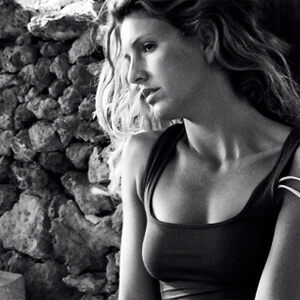Raquel Chicheri is a freelance photographer.
I am from Galicia, Northern Spain but because it was cold and wet I decided to move to Fuerteventura, an island off the coast of Africa which has a much better weather. I loved photography since I was a kid, my father is a great photographer and his work inspired me from the beginning. I studied " comercio internacional" (International commerce or trade) but I only worked one year in that field and then decided to study graphic design which I liked better. I worked a few years but when I met my boyfriend who was a professional windsurfer, I began to take pictures of him and of his trips and it is at that time that I began publishing photos in windsurfing magazines. I am inspired by almost everything, kids, water, animals, street... I don't take pictures in a studio, I take my camera everywhere and when I see something that catches my attention I shoot. I spend most of my time on the beach and I broke several cameras with the sand but I don't care as long as I take good photos. If the situation is right I see it right away, I cannot wait for the situation to develop too much because I usually go for a walk with my children and I have to take care of them. I prefer the situation to be casual, I hope to capture nature and the relationship of people around it. Some situations are magical, when I realize I am in front of something special, my heart beats so fast and the happiness is absolute. There are so many cheesy, affected photos all around, I try to be different. I would love to make a complete series of photos about cuba...
All about Raquel Chicheri:AAP: When did you realize you wanted to be a photographer?I realized I wanted to be a photographer when I had my children and I couldn't stop taking photos of them.
AAP: Where did you study photography?I studied photography on the life school with the people who shared it with me.
AAP:Do you have a mentor?Life
AAP: How long have you been a photographer?Since I met my boyfriend. I used to take windsurfing photos of him for magazines.
AAP: Do you remember your first shot? What was it?It was a self-portrait.
AAP: What or who inspires you?Life, people, animals, lights, situations...
AAP: How could you describe your style?I prefer someone else to do it for me...
AAP: What kind of gear do you use? Camera, lens, digital, film?Canon Eos Mark II 5D, my favorite lens is the 50mm f:1,4.
AAP: Do you spend a lot of time editing your images?No
AAP: Favorite(s) photographer(s)?Cartier-Bresson, Doisneau, Sally Mann, Mccurry, Newton, Cristina Garcia Rodero, Murray Michel, Man Ray, Jock Sturges, Margaret de lange, Koudelka, Eve Arnold, Saudek... so many..
AAP: What advice would you give a young photographer?To be what you are and not what everyone else want you to be.
AAP: If you could have taken the photographs of someone else who would it be?My grandmother who already died.
AAP: Anything else you would like to share?"and that people who make dates are the same kind who need lines on their writing paper, or who always squeeze up from the bottom on a tube of toothpaste" Julio Cortazar, HOPSCOTCH.
